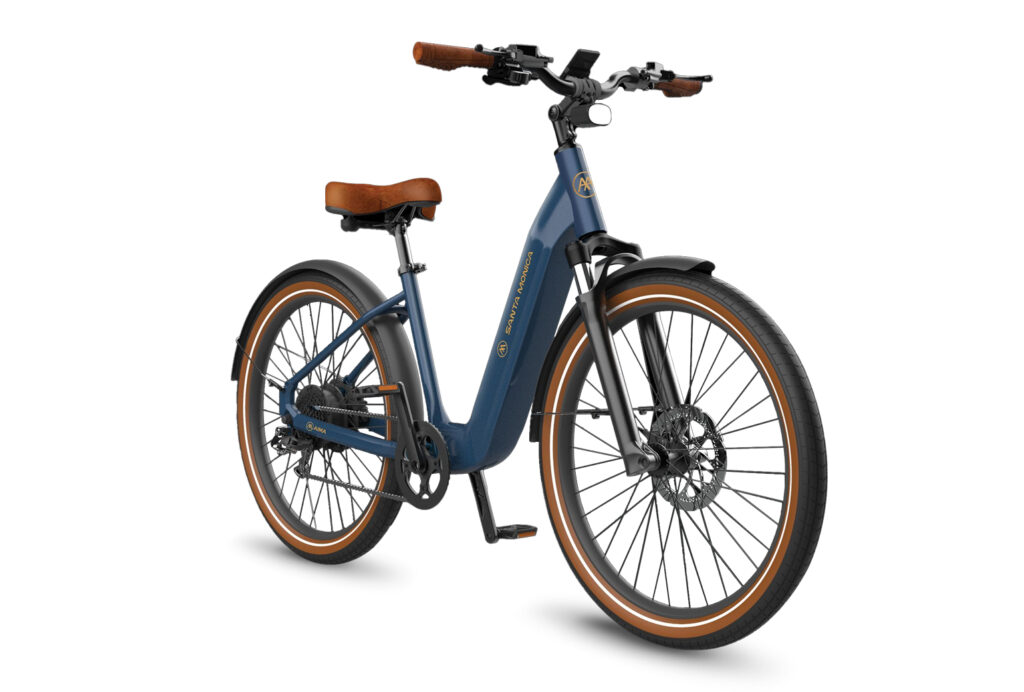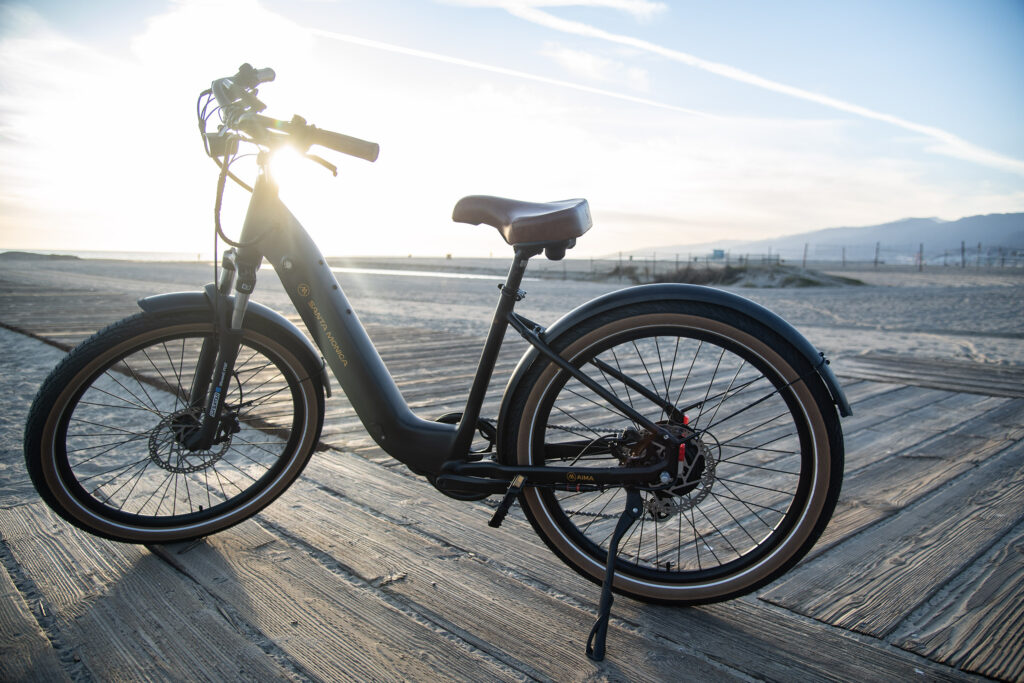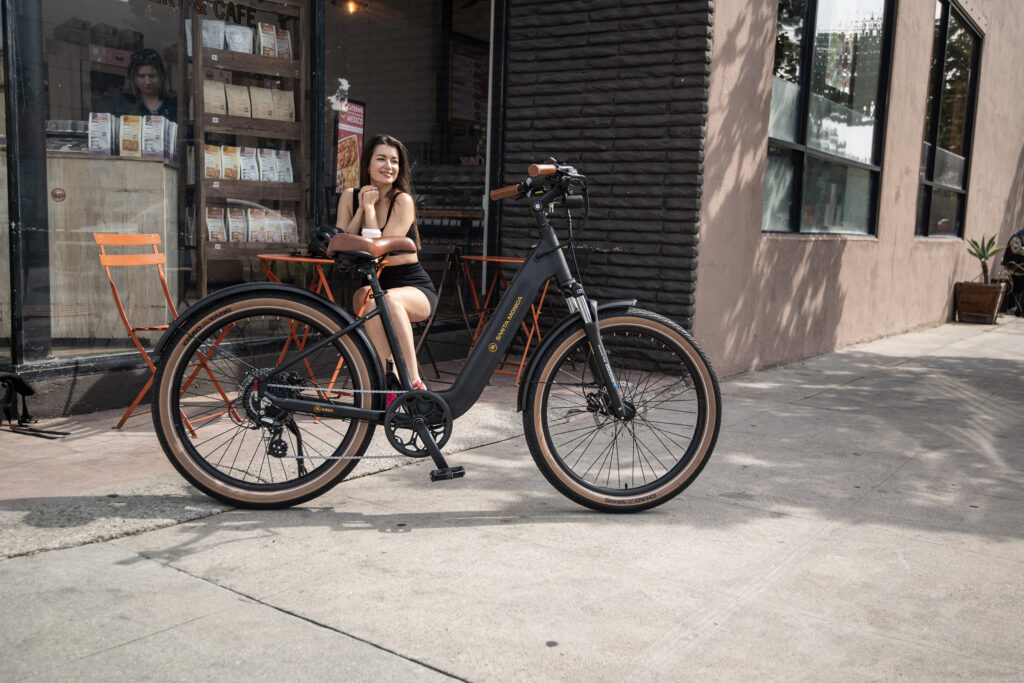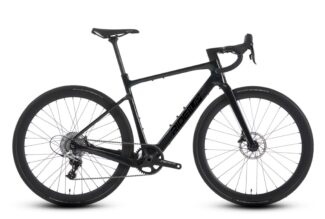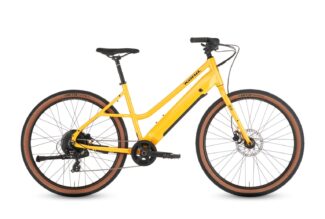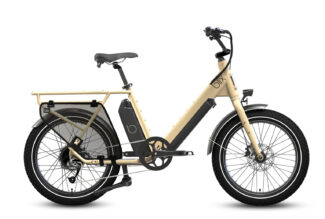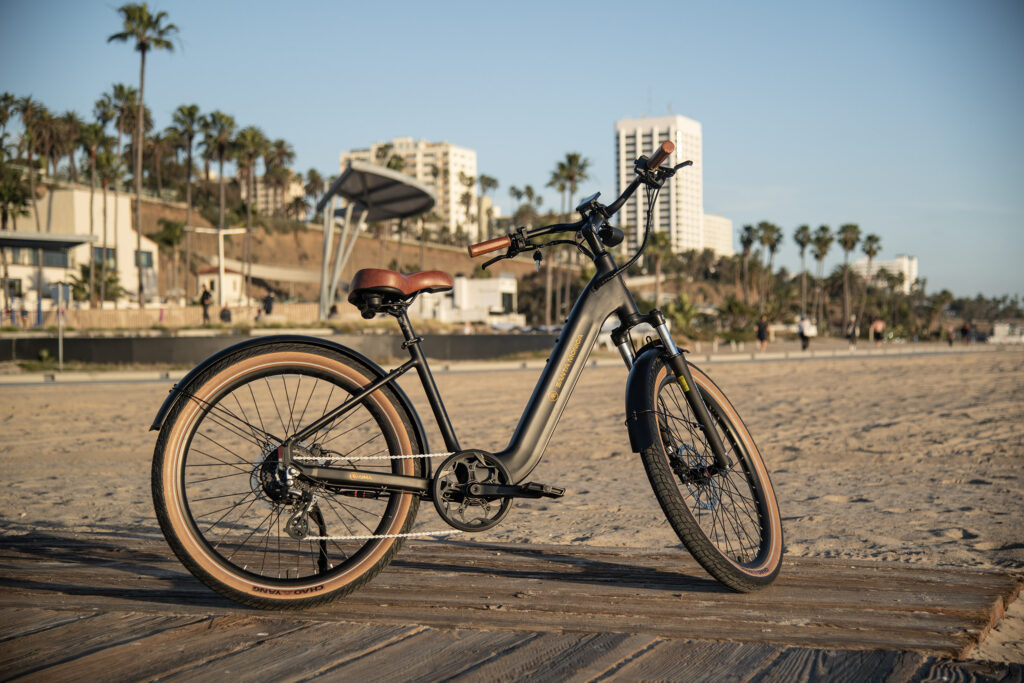
Shipping and Assembly
I received the bike fully assembled — but only because it was a pre-launch model. Normally, AIMA doesn’t sell directly to consumers to help avoid any assembly mishaps. If you want to get the Santa Monica, you can find an AIMA dealer and even take the bike for a test ride.
Apps and Connectivity
AIMA doesn’t offer an app. However, the Santa Monica’s display does have a USB-A port that lets you charge your phone while riding.
If you decide to do that, you might want to invest in a few accessories, like a handlebar mount for your phone and the correct cable. That way, you can use apps like Google Maps or Strava to guide you and track your rides.
How the AIMA Santa Monica Performed
All in all, I thoroughly enjoyed my time riding the AIMA Santa Monica. Let me tell you why.
The Motor

Most commuter e-bikes include 250-500 W motors, but AIMA wanted something more powerful — yet more compact — for the Santa Monica. Thanks to its partnership with Bafang, the Santa Monica includes a 750 W motor called Route 66. It looks the size of a 500W motor but emits 50% more power.
Like AIMA’s Big Sur model, the Santa Monica sports a torque sensor that provides a more natural pedaling experience. Traditionally, manufacturers included torque sensors in high-end bikes with mid-drive motors, so I think this trend of putting them in lower-priced, hub-motor-powered bikes is simply fantastic!
The Battery and Charger
The removable 720 Wh battery fits in the down tube and only requires a key to unlock. This system simplifies winter storage since you can keep the battery inside. You can even take the battery off for charging — or charge it right on the bike if you prefer.
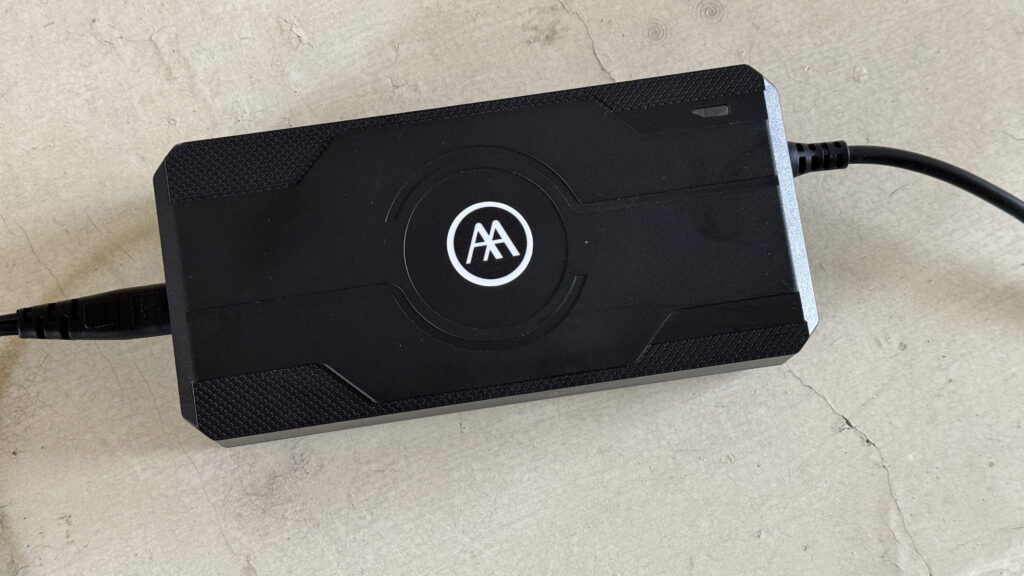
I want to give kudos to AIMA for its attention to detail, right down to the molded logo on the charger. So many companies source a generic charger and never put their name on it, risking the possibility of someone plugging one of their e-bikes into the wrong charger. Not only could this damage the system, but it could also cause a fire. AIMA really stepped it up here.
The Fit

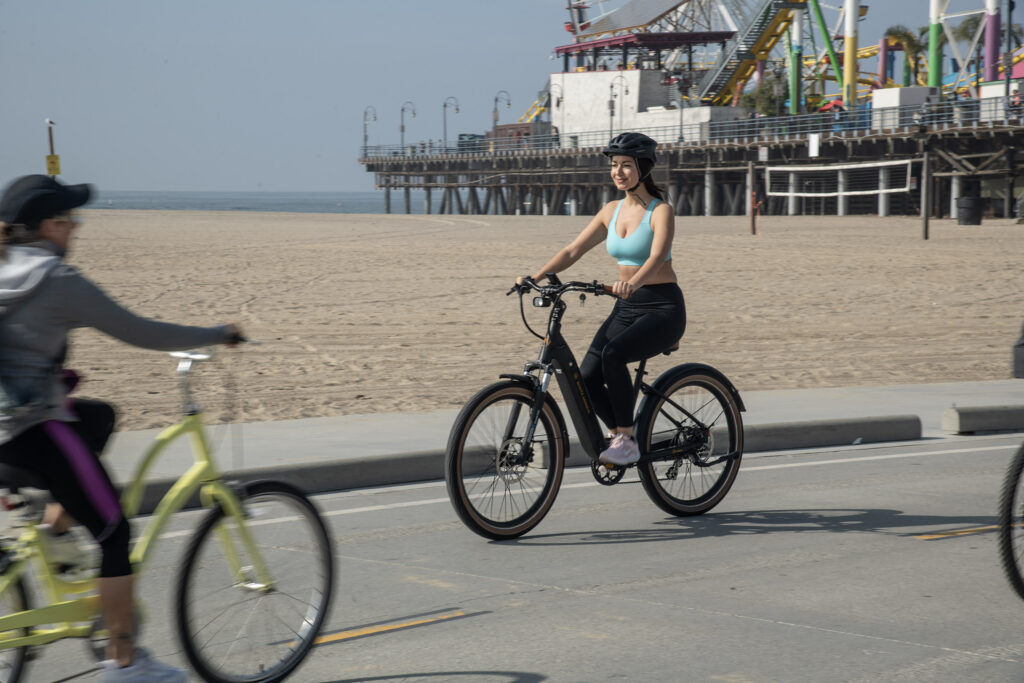
The Santa Monica accommodates riders of all sizes. The step-through frame facilitates mounting, and you can adjust both the seat and stem with simple tools like an Allen wrench. If there’s enough room, you could even add a suspension seatpost for an extra cushy ride.
Speaking of cushy, AIMA opted for a huge, highly padded leather seat, similar to the one on the Big Sur. I understand that the goal was to offer a seat that nearly everyone would find comfortable. However, I have to say I didn’t love it. It was great for the first part of my ride but then became quite uncomfortable. Plus, it adds a few extra pounds to the bike.
The handlebar has a pretty big sweepback, which might work for some riders. I personally prefer a flatter bar, but the fit wasn’t uncomfortable.
The Extras
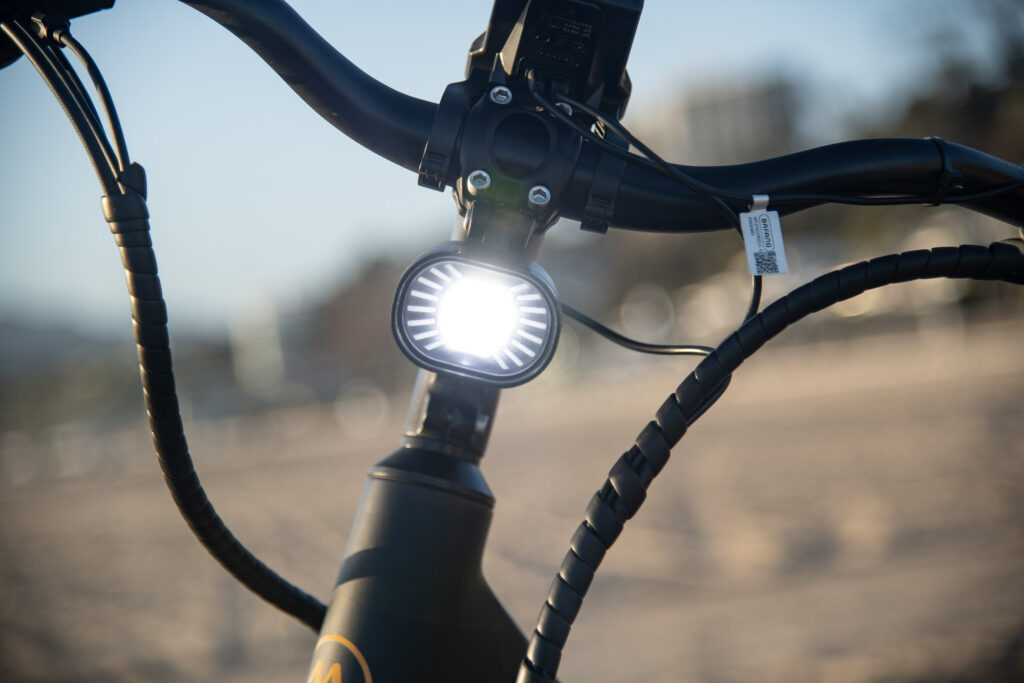
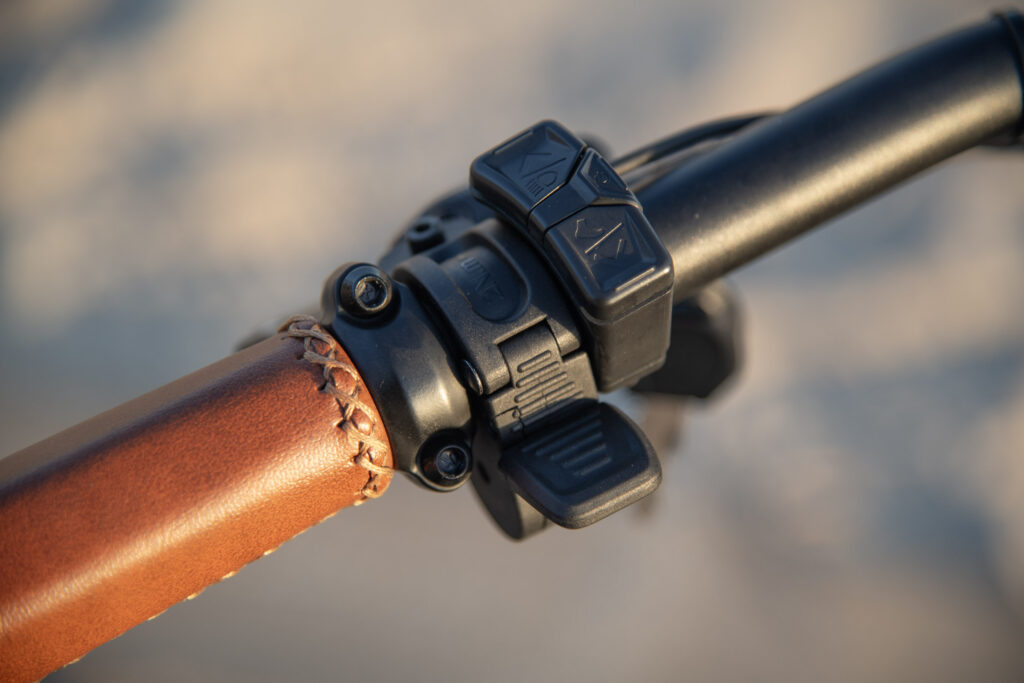
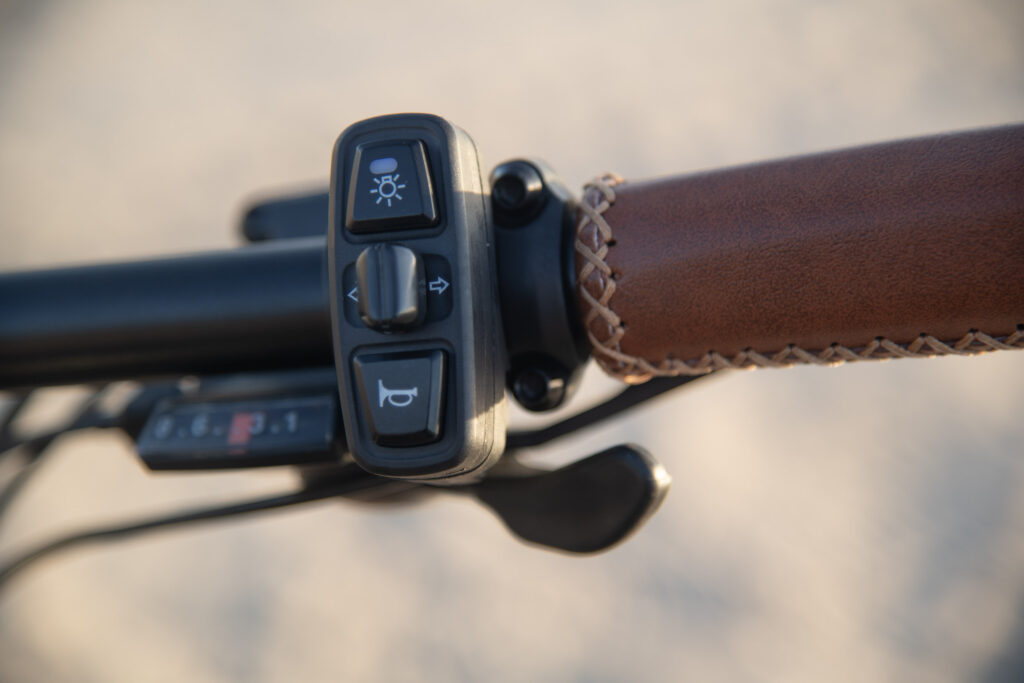
Touch points include leather grips, aluminum platform pedals, and retro-reflective strips on the side of the wheels for better night visibility. The Santa Monica comes stocked with sturdy plastic fenders to keep you clean while riding through rain or puddles.
This commuter e-bike also sports a bright 100 lux headlight, a color TFT display, and a throttle for when you don’t want to pedal. There are turn signals and a horn, but I have to say they are much too loud for my taste.
While the AIMA Santa Monica doesn’t include a rear rack, it does have bosses to mount one on the top and bottom of the seat stays. You can also find bosses on the down tube for mounting things like water bottles. Just note that there are no mounting points on the head tube or fork.
The Riding Experience
Once you turn on AIMA’s Santa Monica and step through the frame to mount, you’re in for a fun time. It offers immediate — but natural — power, thanks to the torque sensor.
I’m glad AIMA chose the SR Suntour suspension fork, as it’s a respected and time-proven component on commuter bikes. It offers 60 mm of travel, enough to take the shock out of bumpy roads. The large-volume 27.5”x2.6” tires also glide nicely over the road. Between their volume and the little bit of travel from the SR Suntour fork, bumpy roads feel smoother.

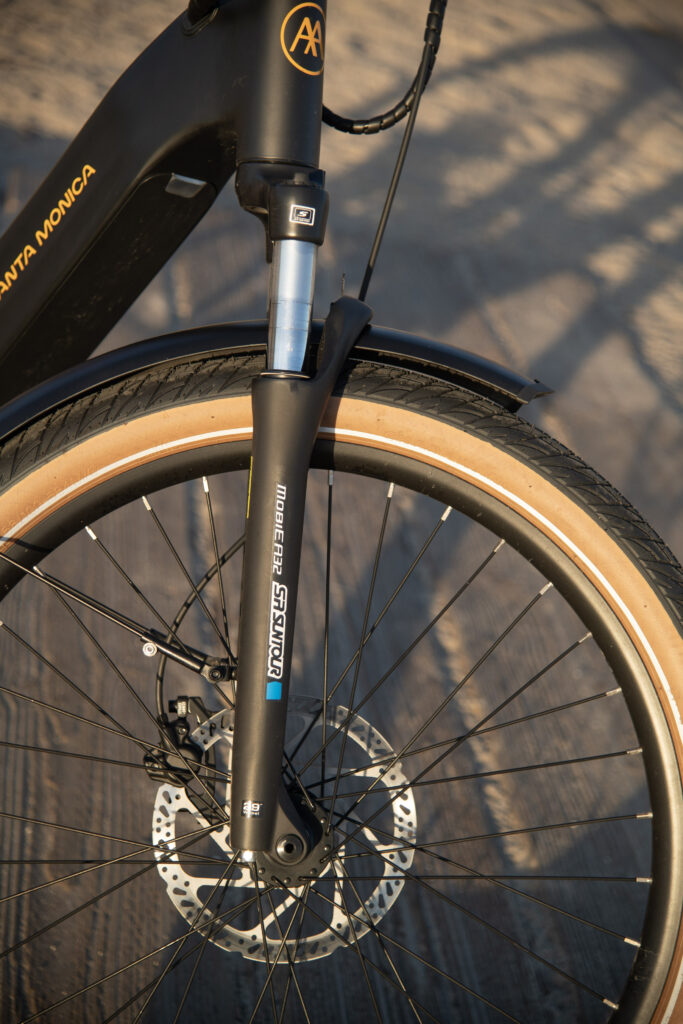
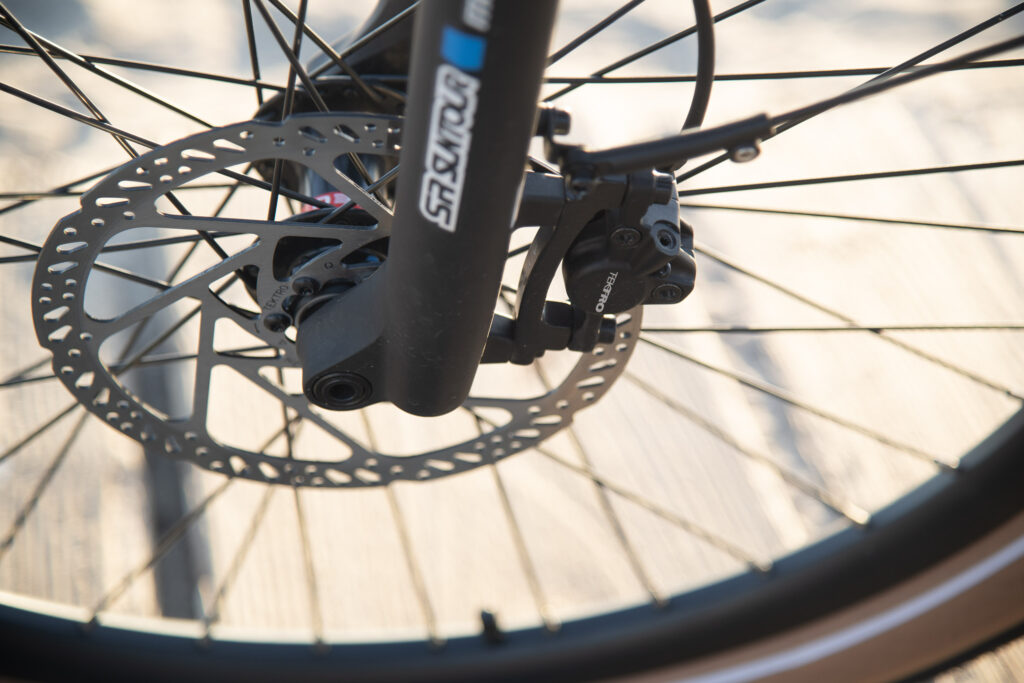
The Santa Monica includes five levels of pedal assist, and you can definitely feel the difference. Even on level 1, you receive plenty of power. The motor is quiet, producing a very light hum, barely audible over the sound of the tires on the pavement.
A Shimano Altus 8-speed drivetrain with trigger shifters also offers a good range of gears and keeps you moving on steep hills. Even though Altus ranks on the lower end of Shimano’s offerings, it’s still really good. On top of that, the Tektro hydraulic disc brakes with 203 mm rotors offer ample stopping power.
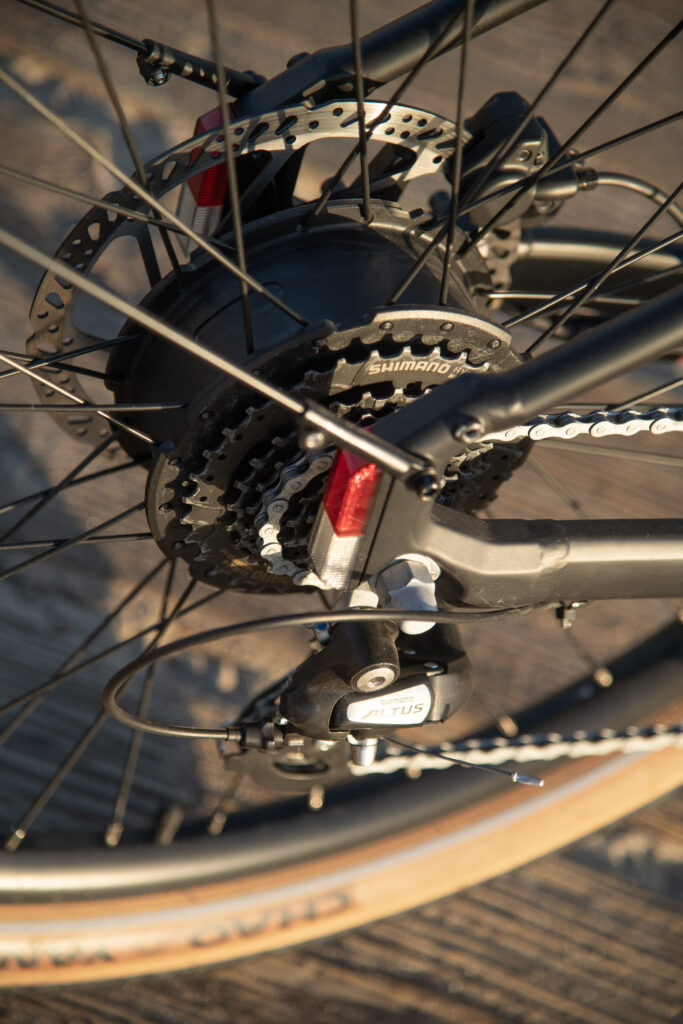
Because I tested a preproduction model, the programming wasn’t finalized. I was able to reach 32 mph with pedal assist still helping me. By the time of AIMA’s official Santa Monica launch, the speed will max out at 28 mph with pedal assist and 20 mph with the throttle. That technically pushes this e-bike to the out-of-class category, so make sure to check your local regulations before getting it.
Performance: Hill Climb Test
I rode the Santa Monica mostly around its namesake, Santa Monica, California, where there are plenty of hills to climb. I have one in particular that I love on Kenter Avenue — and it’s extremely steep.
I rode a little over five miles to reach the hill, specifically trying to torture-test their new 750 W Bafang motor. I have actually drained some test bikes’ batteries just getting to the trailhead. Needless to say, the Route 66 performed well.
Once I got to the climb, I put the motor on level 5 and pedaled to make it all the way, trying the throttle once or twice. With the throttle, the bike can technically go up to 20 mph, but it wasn’t going over 12-15 on the steep hill, even while putting out a peak of over 1,200 W!
I pushed it pretty hard because hub motors often overheat and shut down on long hills. This Bafang Route 66 motor had no issues, though.
Performance: Brake Test
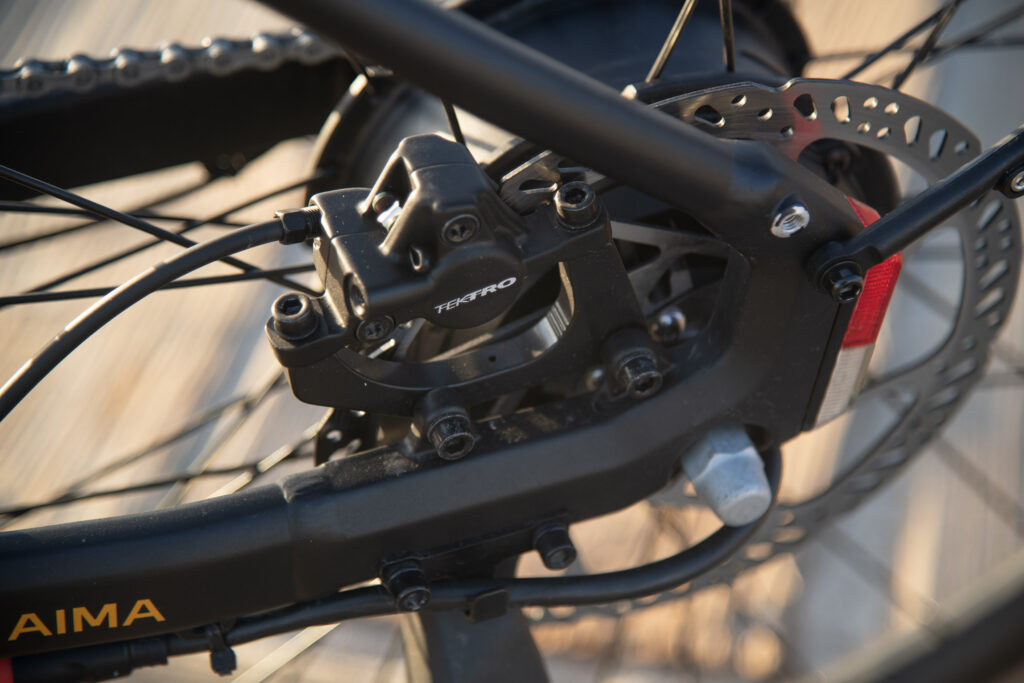
AIMA made a great choice by including the Tektro hydraulic brakes with 203 mm front and rear rotors. Most bikes in this class tend to use 180mm rotors. However, the larger-diameter rotors offer more leverage for the calipers and better modulation, which is a must on heavier, more powerful commuter bikes like the Santa Monica.
It’s nice to have the premium quality and control of hydraulic disc brakes. These Tektro ones provide more than enough stopping power and are easy to modulate — which became especially clear on my descent from the trailhead. Even good brakes can fail on a steep, two-mile descent, but the Tektros and rotors handled it with no issue and got me back down safely.
Performance: Range Test
AIMA claims a range of “up to 60 miles” for the Santa Monica. That wording makes sense since my ride test yielded a much, much lower range. The 60-mile maximum might be feasible riding in perfect conditions in eco mode with no cargo — but is that realistic for a commute?
I tested the range here in Santa Monica, where there are plenty of hills. I spent a lot of time in eco — or mode 1 on the display — but for some hills, I upped it to level 4 just because I could. The whole trip totaled a mere 10.86 miles and used 28% of the battery. Doing some simple math would show an estimated range of about 39 miles.
Considering just how much time I spent in mode 1, I think most riders could expect 30-40 miles out of a full charge, depending on terrain, rider weight, and pedal-assist mode. The torque sensor should theoretically lengthen the range since it reduces battery dependency, but I don’t see the range ever reaching the 60-mile mark.
Things to Consider
Although the AIMA Santa Monica performed quite well, I did find a few things the company could improve — mainly the weight. It comes in at 66 lbs, which definitely teeters toward the heavier side. If your commute includes steps or a subway, the e-bike’s weight might make the journey more difficult. Even hoisting the bike up the stairs to my apartment proved challenging.
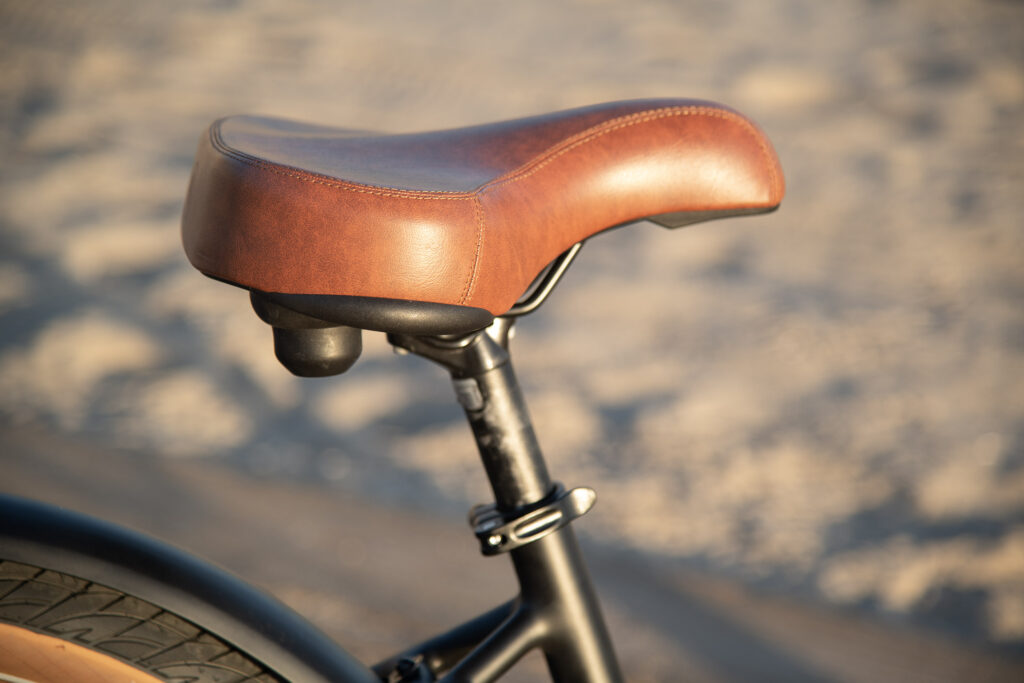
Comfort is a bit subjective, but I think it’s worth pointing out just how uncomfortable I found the saddle after a while. Not only does it add several pounds on an already heavy bike, but it wouldn’t make a daily commute very enjoyable — especially one that’s 20+ minutes. If I were buying this bike, I’d likely swap it out for a lighter, fitted one, like the ones from SQ Lab.
I mentioned this above, but the limited range poses some concerns for a commuter e-bike. If the claimed 60-mile range was true, that would be one thing. But I could only get a realistic 30-40 miles out of it, which might not cover a longer commute. You don’t want to get stuck with no charge, trying to pedal a 66 lb bike.

